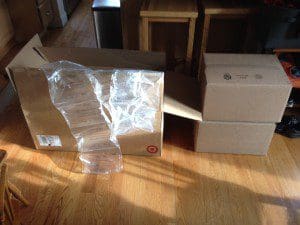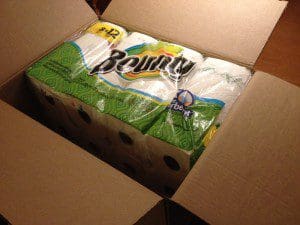Today’s consumer is more informed than ever about the products they are buying. This includes product attributes and information, advantages, limitations, and competitive pricing, among others. The notion of the informed consumer has also taken on a new meaning lately. Namely, consumers care where the products come from, and how it is made. This is making retailers re-think some of their sourcing requirements, as consumers want more visibility into what makes up the food they buy, the toys they buy their kids, and pretty much anything else that could have a negative impact on them.
For a while, the negative impact applied mostly to their health and wellness. But as consumers grow increasingly eco-conscious, this also applies to their carbon footprint and the environmental impact of their choices and purchases. As a result, retailers need to take a look at how they can reduce the environmental impact of their shipping processes. One area that comes to mind is packaging. Retailers are using an excessive amount of packaging to ship items to customers. The extra boxes, bubble wrap, tissue paper, and additional packaging materials can have a negative impact on the environment. It is materials that can be used for other shipments, reducing the amount of materials retailers need to keep on hand. If the end consumer does not recycle the excess material, it is clogging landfills and contributing to a growing problem. To further complicate things, as trucks are packed less efficiently, it takes more routes to deliver all the packages. The combination of money spent on additional fuel for more routes and the emissions from these vehicles contributes to overall pollution issues.
But more importantly for retailers, they can have a significant impact on their profitability. While it is clearly important to protect items when shipping them, sometimes it just goes too far. I’ll give you two examples from my life.
- Recently, my wife and I received a package for our daughter’s birthday. The box was approximately 3’ X 2’ X1’. When we opened it, there was a box occupying half of the larger box and a massive amount of bubble wrap in the other half. As we opened the second box, there was a small flat box inside with even more bubble wrap. As we opened the third box, we got to the gift: a 5” X 7” picture frame. It was a very nice frame and worthy of adequate packaging to ensure it did not break. However, it certainly did not need 3 boxes worth of bubble wrap to keep it safe.
- My wife and I ordered some products online. As we opened the package, we realized that the box contained two smaller boxes and some bubble wrap (picture 1). Box 1 contained the paper towels we had ordered (picture 2) plus a bunch of empty space. Box 2 (picture 3) contained the toilet paper we had ordered as well as even more empty space. I couldn’t help but laugh when I opened the boxes; paper towels and toilet paper are not breakable and clearly do not need the additional packaging of separate boxes or bubble wrap. Again, this was an example of wasteful packaging.
Picture 1: Main Box
Picture 2: Sub-Box 1
Picture 3: Sub-Box 2
So how does this affect the retailer’s profitability? First, the retailer is paying to ship air, rather than just the products that I ordered. Second, the retailer is using more packaging materials than is needed. This means they need to keep more on hand at distribution centers and warehouses, which raises their costs. A solutions embedded in some TMS applications can help retailers to eliminate the problem. A packaging optimization module within a TMS allows the retailer to match products with the right size boxes to eliminate shipping air or additional packaging materials. For some companies, optimizing their packaging materials has actually driven an ROI in the warehouse, and can be a major source of eliminating or reducing lost margins and revenues.
Reducing wasteful amounts of packaging can serve two purposes for retailers. First, they can keep eco-conscious consumers happy knowing that resources and materials are not being wasted in the delivery of their orders. And second, they can achieve a positive ROI by optimizing their packaging materials.




















Another time to identify the optimal box is at the time the retail order is received and processed by the customer service rep. This capability means the cartonization occurs in the ERP upstream before any tendering and committal to the carrier occurs. This allows for the customer service rep to potentially groom an order to be able to potential add other materials to the optimal box. There may be the opportunity to upsize the order if there is additional room in the box. Lastly, upstream identification of the correct box reduces downstream labor requirements because the optimization occurred at the earliest point before execution activities start.
Overall value is there in either business scenario!